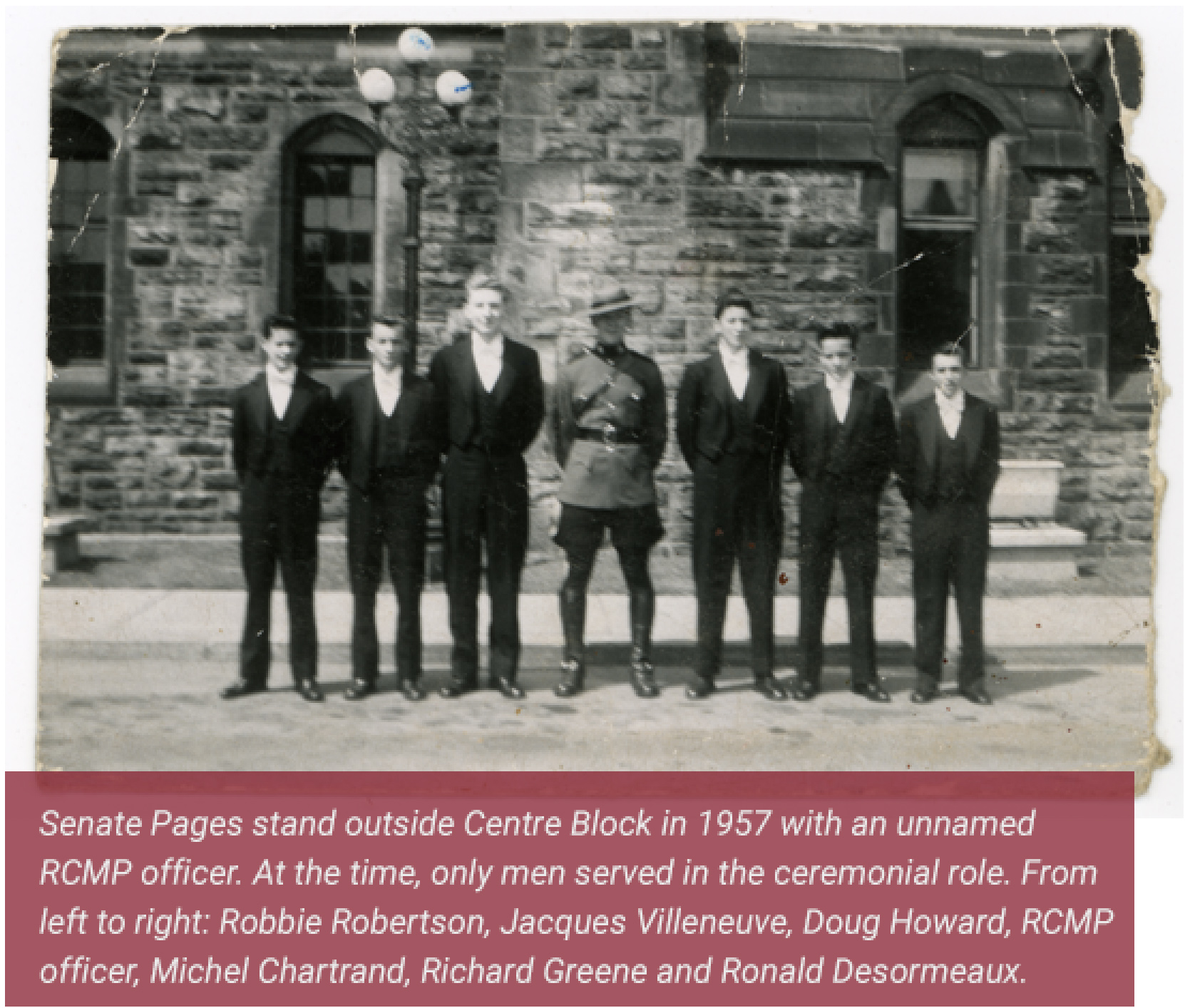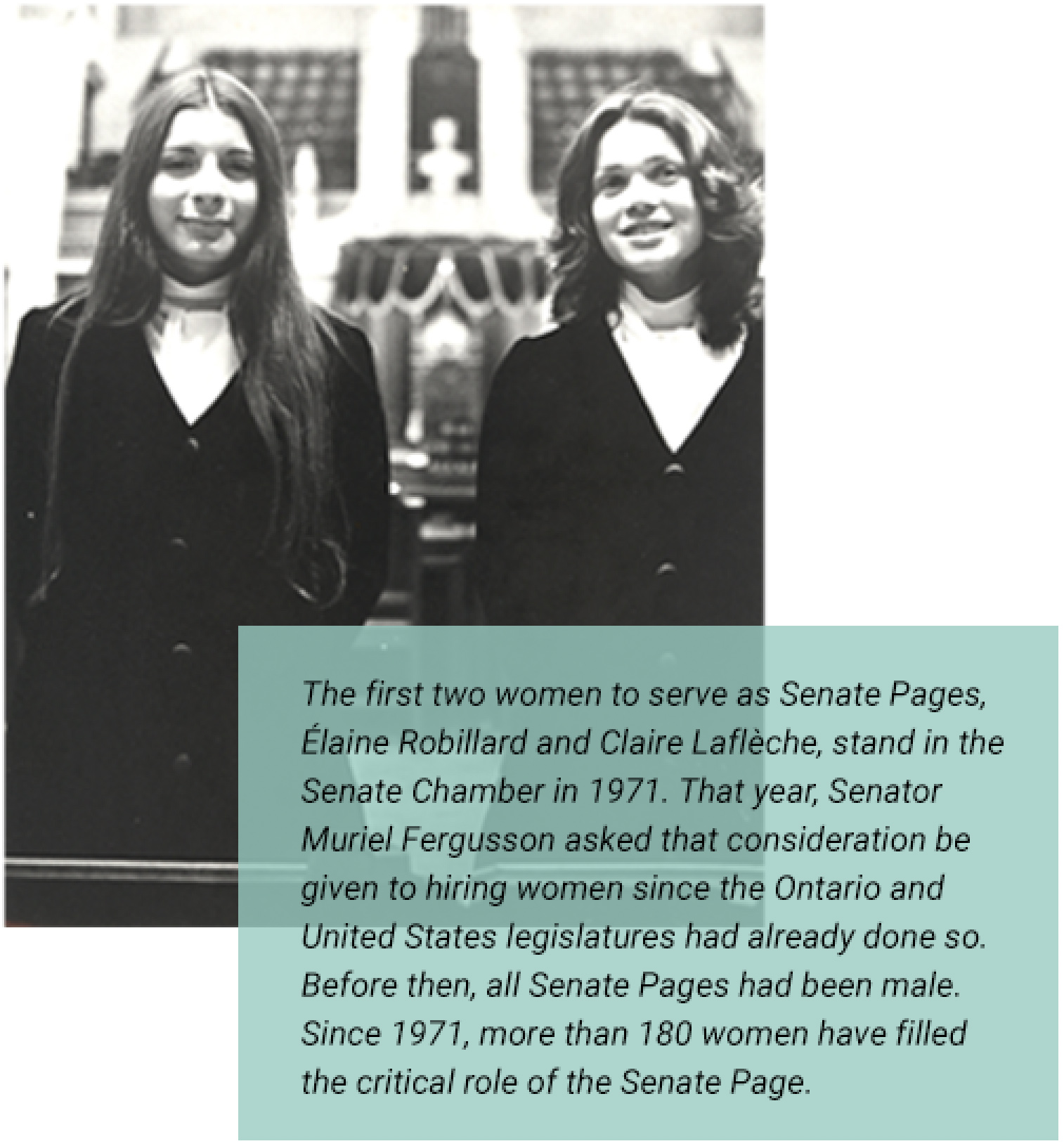HISTORY
It is difficult to determine the origins of the Senate Page Program. The title “page” first started to appear in the Journals of the Legislative Assembly of the Province of Canada in 1841. There are also reports indicating the presence of pages in legislatures as early as 1765 and 1827. It is certain, however, that by 1868, the position of page was a well-established part of Canadian parliamentary life.

Following Confederation, the basic requirement of a Senate page was “to be a smart little boy.” Pages needed to be little for several reasons. First, without a microphone system in the Chamber, it could be difficult to hear the senators during their speeches. Therefore, it was important for pages to be short enough not to obstruct the sound. In addition, parliamentarians were concerned that taller pages might obscure their view during debate. Finally, the uniform was available in only one size, so pages had to be small enough to fit it. As a result of this size requirement, pages typically had to retire by the age of 17.
Initially, the Senate had only six pages. Following the First World War, priority was given to candidates who were young boys from needy families. The six pages were required to be present for every sitting of the Senate because the sitting hours did not conflict with school. As the work of the Senate expanded and its sitting hours started to interfere with school, the decision was made to select university students as pages. This practice began in 1971, and the pages were required to organize their schedules around the sitting hours of the Senate.
That same year, the Senate opened its page program to women. In June 1971, Senator Muriel McQueen Fergusson — who later became the first woman appointed as Speaker of the Senate — asked that consideration be given to hiring female pages in the Upper Chamber. She noted that the United States Senate and the Ontario Legislature had already broken with tradition and appointed young women as pages. Months later, Speaker Jean-Paul Deschatelets introduced the first two female pages in the Senate.
The responsibilities of the Senate pages have expanded in recent years. Initially, pages were responsible only for assisting in the Chamber during sittings. Now, they also assist senators in Senate committee meetings and work in the Senate Administration when the Senate is not in session. These added tasks provide pages with a broader understanding of the functions of the Senate. As the workload has grown, the Senate Page Program has also expanded over the years, first to eight pages, then to 15, and more recently to 17.
Today, the Senate Page Program is made up of 17 undergraduate students from all over Canada. The Senate pages must be students enrolled at the University of Ottawa, Carleton University, Saint Paul University or l’Université du Québec en Outaouais for the duration of their contract.
Although many former pages have pursued other paths, several of them now find themselves in other positions at the Senate after completing their contract as a page.


